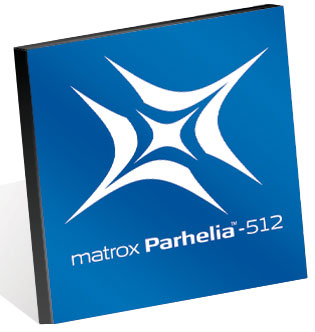Matrox's Comeback Kid - The Parhelia-512
by Anand Lal Shimpi on May 14, 2002 9:00 AM EST- Posted in
- GPUs
What is a Parhelia?
 The
first question everyone asks when they hear the word is "What is a parhelia?"
A parhelia is a natural phenomenon that occurs when light is reflected and refracted
by ice crystals in the air. The resulting effect, generally referred to as a
halo can take the form of a parhelia when one or two false suns can appear in
the sky. The parhelia effect also goes by the name sundog however the Matrox
Sundog is definitely not a very marketable name for a GPU and thus Parhelia
was chosen. The fact that one of Matrox's senior employees happens to be a bit
of a space-buff help secure the Parhelia name for their return to the performance
3D market.
The
first question everyone asks when they hear the word is "What is a parhelia?"
A parhelia is a natural phenomenon that occurs when light is reflected and refracted
by ice crystals in the air. The resulting effect, generally referred to as a
halo can take the form of a parhelia when one or two false suns can appear in
the sky. The parhelia effect also goes by the name sundog however the Matrox
Sundog is definitely not a very marketable name for a GPU and thus Parhelia
was chosen. The fact that one of Matrox's senior employees happens to be a bit
of a space-buff help secure the Parhelia name for their return to the performance
3D market.
Luckily (for both Matrox and the end users), the Parhelia-512 is in no-way a derivative of the G400 core. The Parhelia-512 is the result of over two years of work by Matrox engineers, after missing many of their competitor's product cycles the Parhelia-512 is ready for its public debut.
Before we analyze the architecture of Matrox's first true GPU let's have a look at its specs:
- 0.15-micron GPU manufactured at UMC
- 80 Million transistors
- 4 pixel rendering pipelines, can process four textures per pipeline per clock
- 4 programmable vect4 vertex shaders
- 256-bit DDR memory bus (up to 20GB/s of memory bandwidth w/ 312.5MHz DDR)
- up to 256MB of memory on board
- AGP 4/8X support
- Full DX8 pixel and vertex shader support
As usual, we're light on the specs here so we can dive into them in greater detail when appropriate throughout the article.
Just as we did in our 3DLabs P10 VPU overview we will take you through the 3D rendering pipeline of the Parhelia-512 and explain its intricacies. In order to get the most out of this review we'd strongly suggest you read this quick one-page explanation of what's going on in the 3D pipeline.










0 Comments
View All Comments